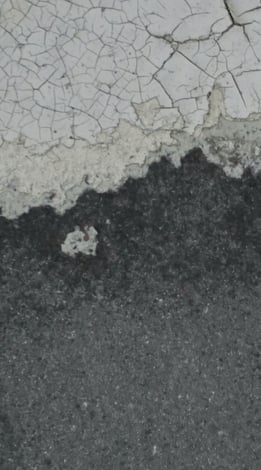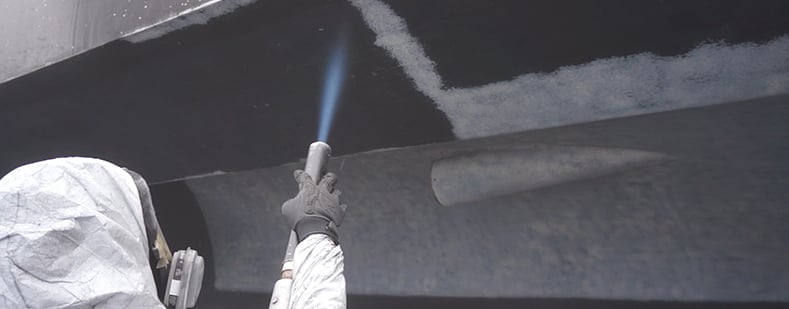Painting a surface might seem like a straightforward task, but the key to a long-lasting and visually appealing finish lies in surface preparation. Whether you're dealing with metal or concrete, investing time and effort in preparing the surface before applying paint is essential. Often the least considered part of a large painting project, the surface prep stage can be a “make or break” for overall project success.
Ensuring Adhesion:
Proper surface preparation is the foundation for paint adhesion. Metal and concrete surfaces are often subjected to various environmental conditions, and without adequate preparation, the paint may fail to adhere properly. Cleaning the surface of dirt, rust, chlorides, oils, or other contaminants is crucial to create a clean and receptive canvas for the paint to adhere. Surfaces should be profiled to create an anchor profile pattern within the guidelines provided by the coatings manufacturer.
Preventing Corrosion:
Metal surfaces, in particular, are susceptible to corrosion over time. Painting over a corroded surface is akin to putting a band-aid on a wound without cleaning it first. Surface preparation includes the removal of rust and corrosion through methods such as abrasive blasting or power tooling. All coatings are water permeable, though the degree of permeability depends on the coating itself. If contaminants are left on the substrate, and paint is applied, a corrosion cell is created, which leads to bubbling and peeling paint further risking damage to the asset.
akin to putting a band-aid on a wound without cleaning it first. Surface preparation includes the removal of rust and corrosion through methods such as abrasive blasting or power tooling. All coatings are water permeable, though the degree of permeability depends on the coating itself. If contaminants are left on the substrate, and paint is applied, a corrosion cell is created, which leads to bubbling and peeling paint further risking damage to the asset.
Unsealed or coated concrete also can create issues. Concrete is susceptible to moisture intrusion, which can lead to spalling and rebar corrosion.
Increasing Coatings Life:
Painting is an investment, and you want the results to last. Proper surface preparation is the key to a long-lasting paint job. By eliminating contaminants, addressing rust, and profiling the surface, you create an environment that helps the paint withstand the test of time.
While some may see surface preparation as an additional step that prolongs the painting process, it is, in fact, a cost-effective measure. Skipping or rushing through surface preparation can lead to paint failure, necessitating repainting sooner than anticipated. This not only incurs additional material costs but also requires more time and effort. Investing in thorough surface preparation upfront saves you from the hassle and expenses of premature paint failure.
Smooth Finish for Aesthetics:
A well-prepared surface contributes to a smoother and more refined finish. Imperfections on the surface, such as bumps, cracks, or uneven textures, can be accentuated if not addressed beforehand. Surface preparation allows for the correction of these imperfections, resulting in a seamless and visually pleasing paint job.
This is especially important for stone and concrete surfaces, where irregularities are more common. In many cases, prior to applying a skim-coat, concrete contractors will need a rough surface. In many cases, these contractors will sandblast down into the aggregate layer.
In the realm of painting, surface preparation is not a step to be overlooked; it is the cornerstone of a successful and enduring paint job. Whether dealing with metal or concrete, the benefits of investing time in preparing the surface far outweigh the drawbacks. From ensuring proper adhesion and preventing corrosion to achieving a smooth and aesthetically pleasing finish, surface preparation is the key to unlocking the full potential of your painting project. So, before you pick up that paintbrush, remember that a well-prepared surface sets the stage for a masterpiece.








